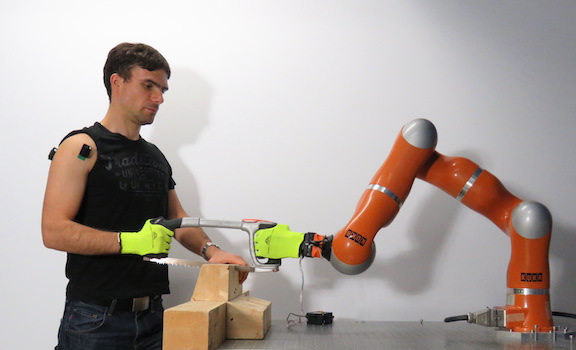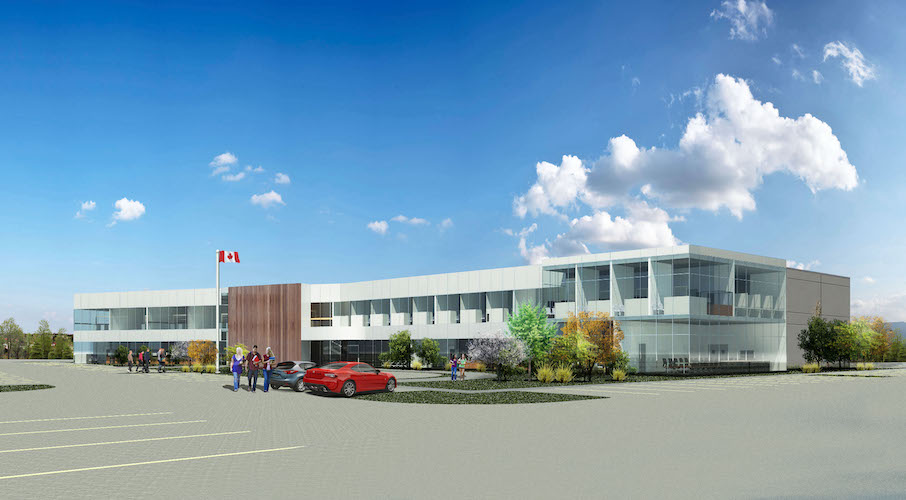Taking a new TAC

Over the past decade, thousands of small and medium businesses that want to grow and innovate have benefited from the applied R&D and business innovation expertise of Technology Access Centres (TACs) at Canada’s various post-secondary colleges and institutes.
And, according Tech-Acces Canada, which represents the network of 60 TACs across Canada, these centres could provide even more significant benefits to Canada, with a broadening of both the nature of the services and the beneficiaries. In a report, The Future of Canadian Technology Access Centres: Thriving in a Rapidly Changing Global Economy, it envisions the centres, funded through the Natural Sciences and Engineering Research Council (NSERC), as supporting both technological and social development in Canadian businesses, community organizations, and government.
“The report is almost a policy prescription,” Tech-Acces executive director Ken Doyle told Research Money. “Now [that] there’s a validated model, what would scaling up and strengthening look like?”
As currently defined, the main focus of the TACs covers primarily applied technological research and economic development, the report notes.
“But what is often overlooked is that both innovation and applied research have a social dimension and social implications,” states the text, which points to areas such as sustainable development, gerontology, and integrating newcomers. “The objective of social innovation is to improve the public’s quality of life by means of innovative social practices that benefit the overall development of our society.”
Tech-Acces highlights the need for increased funding for TACs, in response to a rising demand for their services. It points out that while the centres have more than demonstrated their relevance and success, they struggle to find the operating funds necessary to sustain their growth. For his part, Doyle cited operating capacity as the “number one pain-point” brought up in surveys.
“Every year, the TACs are expected to do more with less, and it is reaching sort of a breaking point network-wide,” he said.
The report recommends that core funding for each of the 60 TACs be increased to $500,000 annually, indexed to inflation, which would represent a total budget increase of $16 million per year. Centres outside Quebec currently receive $350,000 a year (unchanged since 2010) while those in Quebec receive $100,000.
Last year alone, TACs generated $58 million in revenue from R&D fee-for-service projects with private sector partners — a 4:1 multiplier that pays for itself, Doyle argued.
In its 2023 pre-budget submission, Tech-Acces also recommended that Ottawa invest $20 million over five years in the Interactive Visits program that connects firms supported by the National Research Council’s Industrial Research Assistance Program (IRAP) to the TACs for short-term collaborations that address company-identified business challenges.
While the future of this initiative may eventually be affected by the recently announced integration of IRAP into the new Canada Innovation Corporation, in August 2022, the program broadened the eligibility — validated by IRAP — of firms referred by TACs. While companies still had to be Canadian incorporated, under 500 employees, and wanting to grow through innovation, they did not necessarily have to be an IRAP client to qualify for Interactive Visits. With continued long-term funding, the goal is to allow more non-traditional innovators, such as those from First Nations communities, co-operatives and non-profits, to receive advice.
Tech-Acces data showed, compared to IRAP-referred clients, the TAC-referred clients are smaller, older, much less likely to have done R&D or collaborate with a post-secondary institution, and less likely to consider taking in a co-op student. They are from a more diverse set of industry sectors, and their owners are more likely to belong to an underrepresented group.
“That's really opened a lot of doors and IRAP is seeing the utility in that as well because we actively kind of act like a talent scout for maybe the next generation of IRAP clients who may never have heard of IRAP or been screened out before,” said Doyle. “We can get them to that sweet spot level where they are ready to really benefit from all the supports IRAP has.”
In a 2023 pre-budget report, the House of Commons finance committee recommended that the program be made more flexible and permanent to increase the participation of SMEs. Doyle echoed that view, describing the importance of a multi-year commitment for innovative Canadian companies, which tend not to do R&D on the federal government's fiscal year deadlines. A company that wants to start a project in February could find the program had spent all its money and it will have to wait until the next fiscal year.
“Every day, you're losing competitive advantage in a global race,” he said. “We'd love to be able to have the intake 12 months a year rolling, rather than having to sort of pause intakes and wait for April 1 every year.”
Doyle added that social innovation is likewise crucial to the Canadian economy and existing capacity can be harnessed to assist in social innovation-geared programs, reducing costs or improving outcomes. About 15-20 percent of the projects TACs undertake, regardless of sector or geography, could be classified as demand-driven social innovation addressing a client’s needs. That could include, for example, a virtual reality walk-through of a safe-injection site, to help people reluctant to visit such a facility in person better understand what goes on there.
He also referred to the valid R&D and innovation challenges faced by Canada’s tremendously creative industries, such as tourism and cultural activities.
“I think for too long R&D innovation has been almost laser-focused on app development, high-tech companies [and] that kind of thing, trying to hit home runs, forgetting that there's nothing wrong with a multi-generational regional tourism company, wanting to innovate, offer a better product for their customers,” he said.
Those companies are going to grow and scale and create wealth in Canada, while many high tech app companies get to a certain level, then get bought or sell out, so the IP leaves while the people stay. “That’s not ideal,” Doyle concluded.
In another area, the Tech-Acces report notes that the current TAC model does not establish national priorities for economic sectors or emerging fields to focus on when creating new centres. In the future, addressing sweeping issues like climate change, which are too big for one centre to handle, could bring together permanent clusters of TACs, mobilizing their various strengths as they collaborate to make a difference.
R$
| Organizations: | |
| People: | |
| Topics: |
Events For Leaders in
Science, Tech, Innovation, and Policy
Discuss and learn from those in the know at our virtual and in-person events.
See Upcoming Events
You have 0 free articles remaining.
Don't miss out - start your free trial today.
Start your FREE trial Already a member? Log in
By using this website, you agree to our use of cookies. We use cookies to provide you with a great experience and to help our website run effectively in accordance with our Privacy Policy and Terms of Service.





